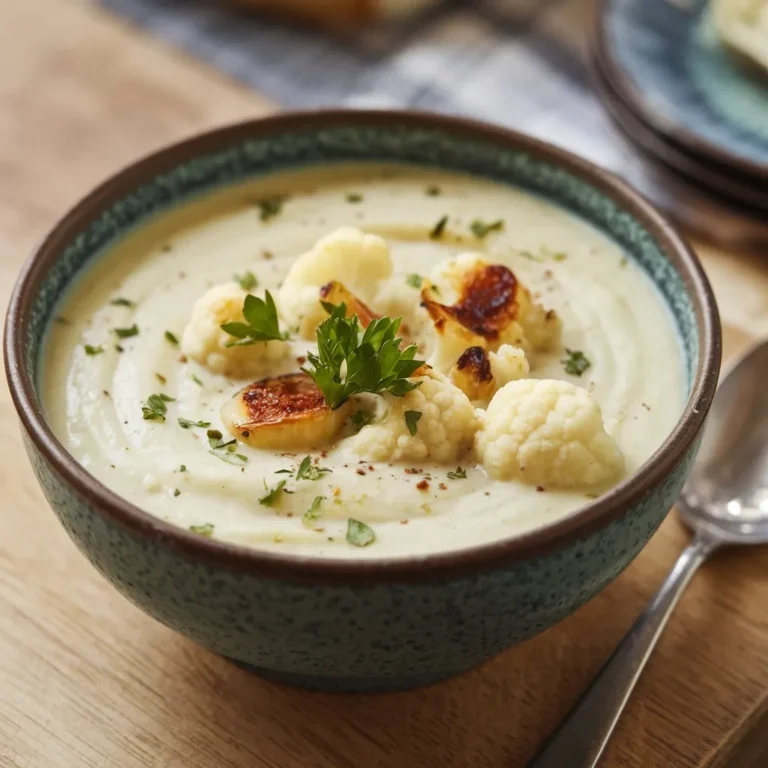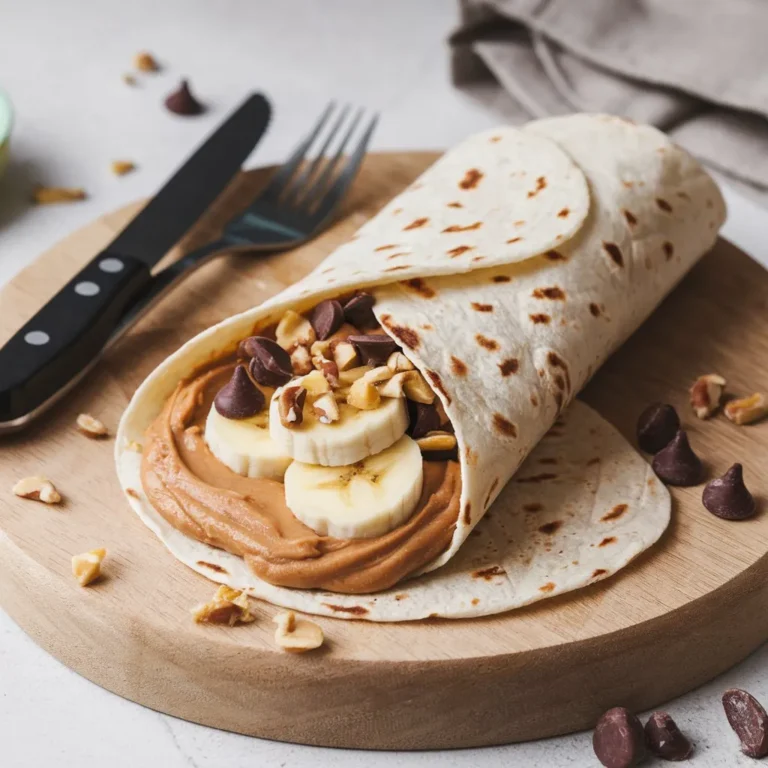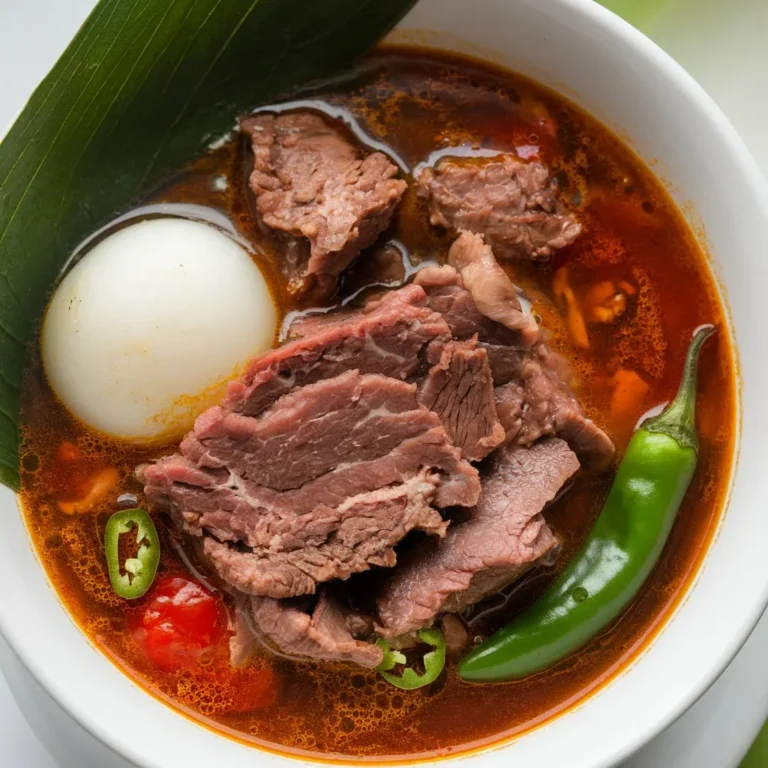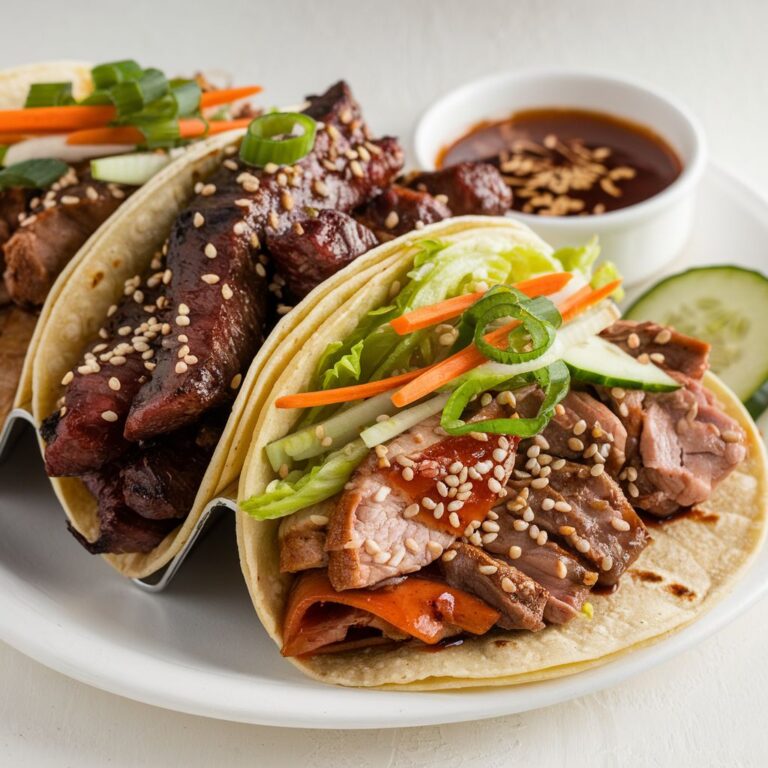Explore the heart of British cuisine with our ultimate guide to the top 10 British dishes! From the iconic fish and chips to the comforting Sunday roast, this comprehensive list celebrates the flavors, traditions, and history of the UK’s most beloved foods. Whether you’re a foodie, a traveler, or simply curious about British culture, discover why these dishes have stood the test of time and continue to delight taste buds worldwide. Perfect for planning your next culinary adventure or recreating classic recipes at home!
1. Fish and Chips Recipe
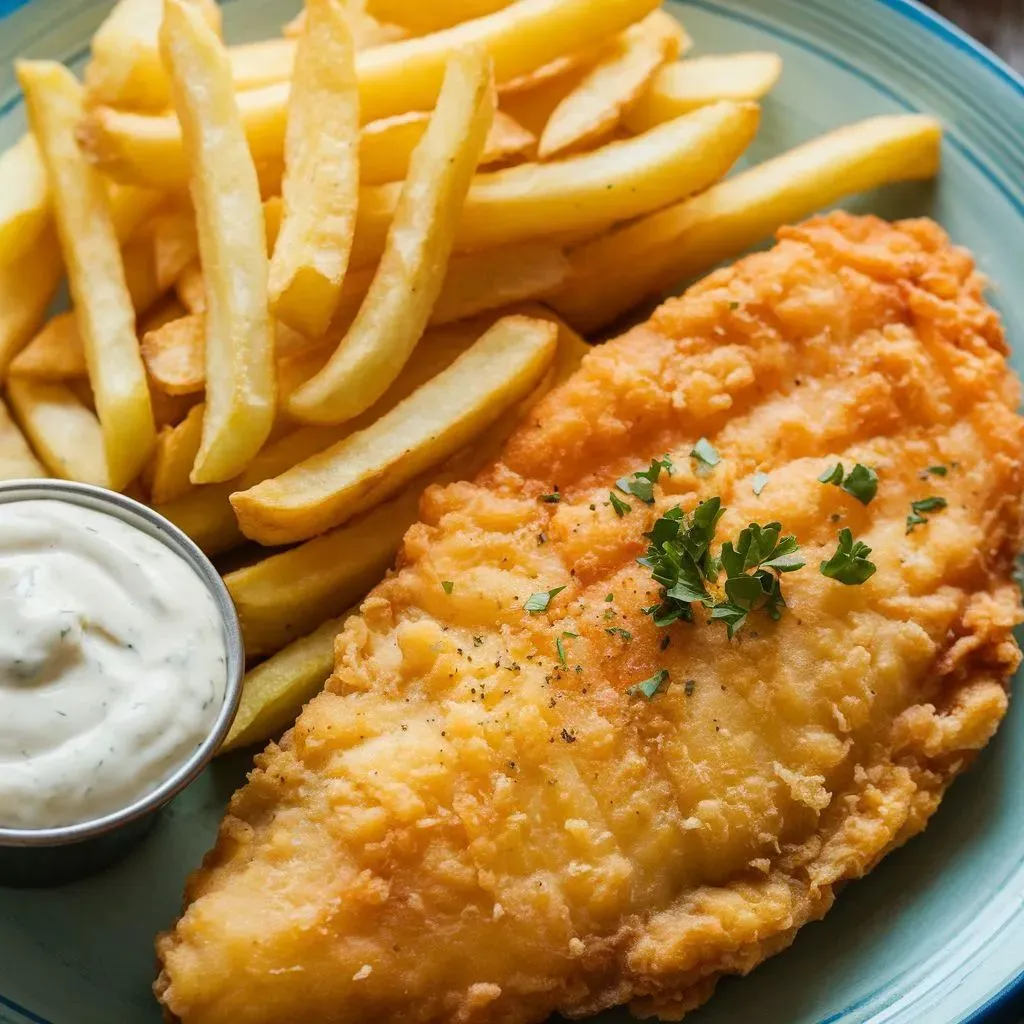
Overview of Fish and Chips
Fish and chips is a classic hot dish consisting of battered and deep-fried fish served alongside chips (thick-cut fries). Often regarded as the national dish of the United Kingdom, its origins trace back to 19th century England, where it became popular among the working class as a hearty meal.
Key Features
- Fish: This dish is typically made with white fish such as cod, haddock, or pollock. The fish is coated in a batter that often includes flour, beer, and baking powder to achieve a light and crispy texture.
- Chips: The chips are thicker than traditional French fries and are usually double-fried for extra crispiness. They are often blanched before frying to ensure they cook evenly.
- Serving Style: Fish and chips are traditionally served with malt vinegar, tartar sauce, or sometimes mushy peas as a side.
Cultural Significance
Fish and chips hold a special place in British culture. They are commonly sold at fish and chip shops across the UK, where customers can enjoy this dish as takeout or dine-in. The meal is celebrated for its simplicity and satisfying flavors, making it a favorite among locals and tourists alike.
Ingredients
For the Fish:
- 225g white fish fillets (cod, haddock, or pollock), skin off and pin-boned
- 225g plain flour, plus extra for dusting
- 285ml cold beer (or sparkling water)
- 3 heaped teaspoons baking powder
- Salt and pepper to taste
For the Chips:
- 900g potatoes (floury varieties like Maris Piper or Yukon Gold)
- Sunflower oil for deep-frying
For Serving:
- Malt vinegar, tartar sauce, or ketchup (optional)
- Fresh mint (for mushy peas, optional)
Instructions
- Prepare the Potatoes:
- Peel and slice the potatoes into thick chips.
- Blanch the chips in boiling salted water for about 4-5 minutes until softened but still firm.
- Drain and let them steam dry.
- Make the Batter:
- In a bowl, whisk together 225g of plain flour, baking powder, and a pinch of salt.
- Gradually add the cold beer while whisking until you achieve a smooth batter with a consistency similar to semi-whipped cream.
- Prepare the Fish:
- Pat the fish fillets dry with paper towels and season both sides with salt and pepper.
- Dust each fillet lightly with extra flour before dipping it into the batter.
- Heat the Oil:
- Pour sunflower oil into a deep fryer or large pot, filling it about 1-2 inches deep. Heat the oil to 190°C (375°F).
- Fry the Fish:
- Carefully lower the battered fish into the hot oil, frying in small batches to avoid overcrowding.
- Cook for about 4 minutes or until golden brown and crisp. Remove and drain on paper towels.
- Fry the Chips:
- Once the fish is done, increase the oil temperature if necessary. Fry the blanched chips in the same oil until they are golden and crispy (about 5-7 minutes).
- Drain on paper towels.
- Serve:
- Serve immediately with malt vinegar or your choice of condiments.
Tips for Success
- Ensure your oil is at the correct temperature to achieve crispy results.
- For extra flavor, consider making mushy peas by simmering peas with mint and butter as a side dish.
- Enjoy your homemade fish and chips fresh for the best taste!
This recipe captures the essence of traditional fish and chips while allowing for variations based on personal preferences. Enjoy your meal!
2. Toad in the Hole Recipe
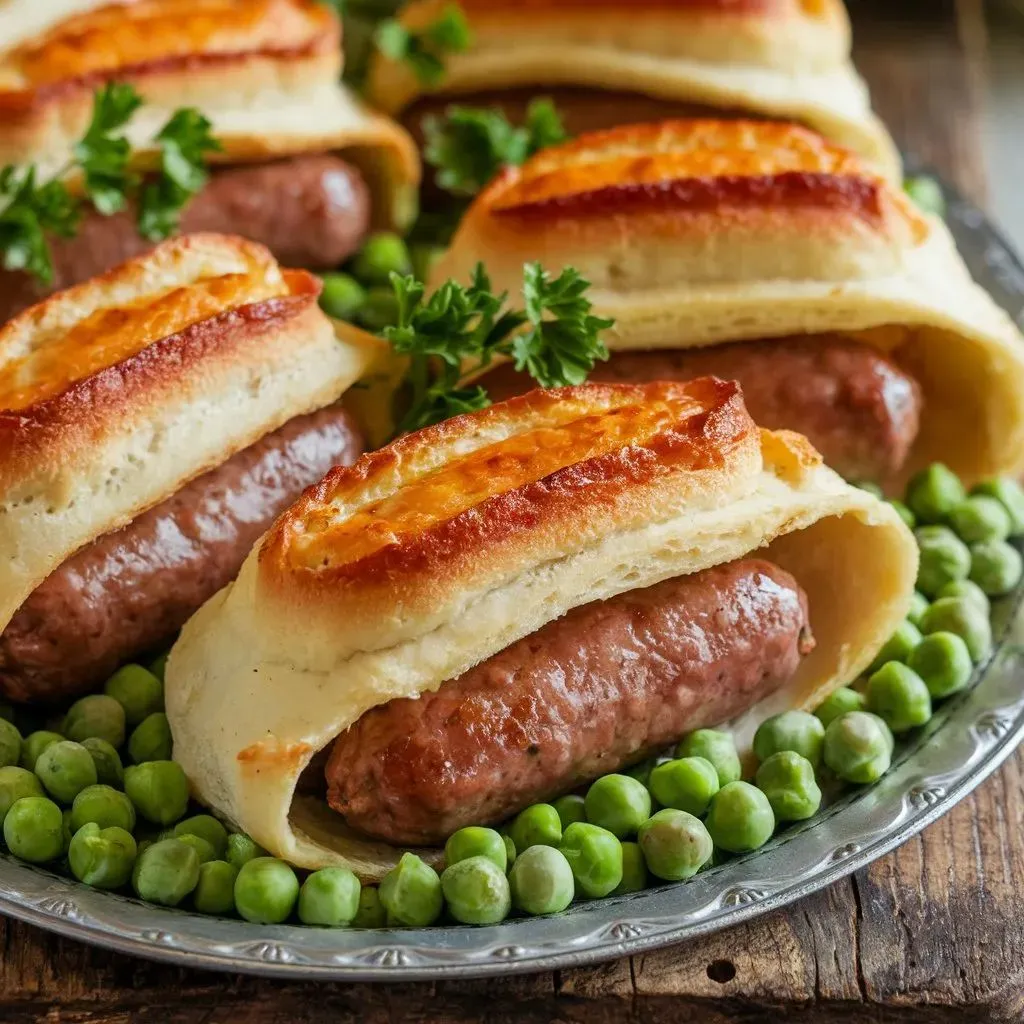
Toad in the Hole is a traditional British dish featuring sausages baked in a Yorkshire pudding batter, typically served with onion gravy. Here’s a straightforward recipe to make this comforting dish at home.
Ingredients
For the Toad in the Hole:
- 8 sausages (about 450g, preferably high-quality)
- 2 tablespoons sunflower oil
- 150g plain flour
- 3 large eggs
- 200ml semi-skimmed milk
- A pinch of salt
For the Onion Gravy (optional):
- 2 large onions, sliced
- 2 tablespoons unsalted butter
- 1 tablespoon flour
- 500ml beef or vegetable stock
- Salt and pepper to taste
Instructions
- Preheat the Oven:
- Preheat your oven to 220°C (425°F).
- Prepare the Sausages:
- In a roasting tin, add the sunflower oil and place it in the oven to heat up.
- Once hot, add the sausages to the tin and cook for about 10 minutes, turning occasionally until they are browned.
- Make the Batter:
- In a mixing bowl, whisk together the plain flour and a pinch of salt.
- Add the eggs and milk gradually, whisking until you have a smooth batter.
- Combine and Bake:
- Carefully remove the hot tin from the oven once the sausages are browned.
- Pour the batter over the sausages quickly and return to the oven.
- Bake for about 25-30 minutes without opening the oven door until the batter is puffed and golden brown.
- Prepare the Onion Gravy (optional):
- While the Toad in the Hole is baking, melt butter in a saucepan over medium heat.
- Add sliced onions and cook until softened and caramelized (about 10 minutes).
- Stir in flour and cook for another minute before gradually adding stock.
- Simmer for about 10 minutes until thickened. Season with salt and pepper.
- Serve:
- Once cooked, serve slices of Toad in the Hole with onion gravy poured over or on the side.
Tips for Success
- Do Not Open the Oven Door: Avoid opening the oven during cooking to ensure that your batter rises properly.
- Use a Metal Tin: A metal baking tin helps achieve a higher temperature for better rising.
- Customize Your Sausages: Feel free to experiment with different types of sausages for varied flavors.
Enjoy your homemade Toad in the Hole as a hearty meal perfect for any occasion!
3. Bangers and Mash Recipe
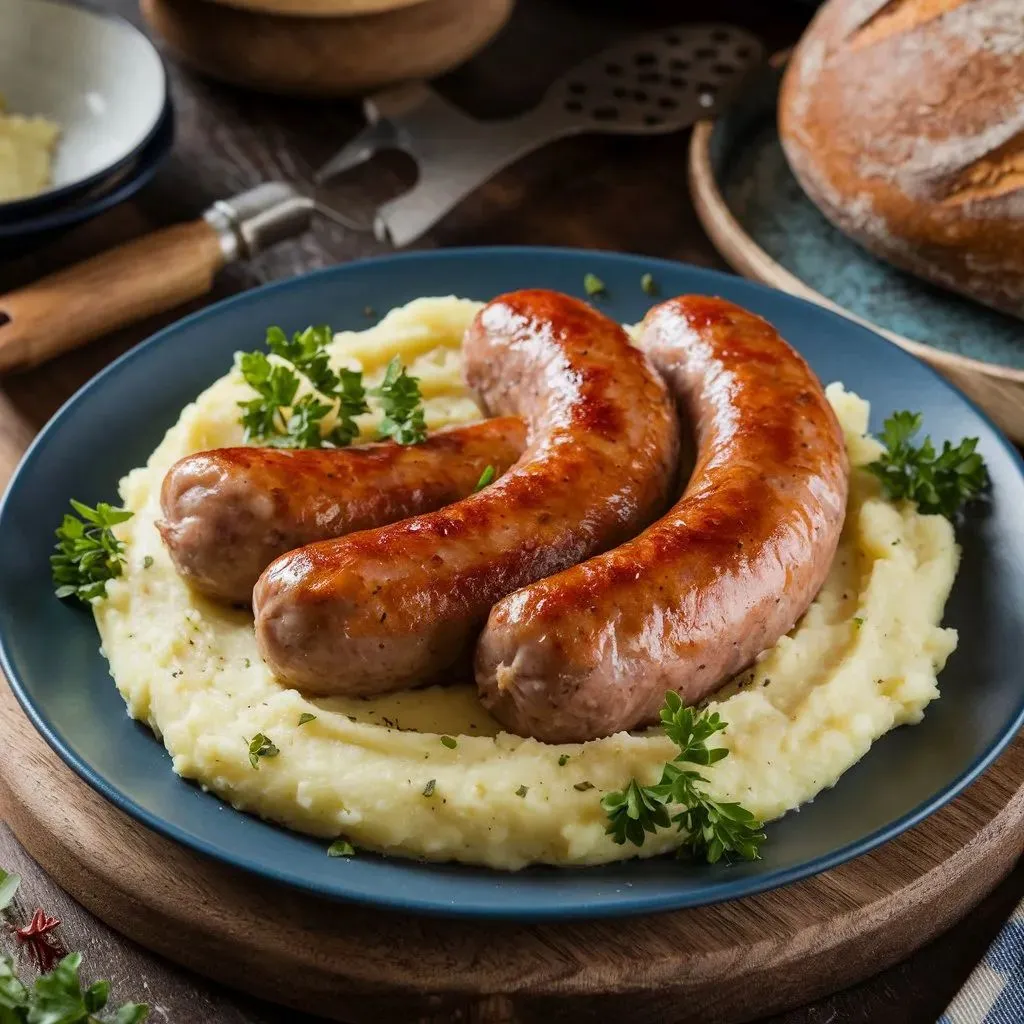
Bangers and Mash is a classic British dish featuring sausages served with creamy mashed potatoes and rich onion gravy. Here’s how to prepare this comforting meal.
Ingredients
For the Bangers:
- 8 pork sausages (preferably high-quality)
- 1 tablespoon olive oil
For the Mash:
- 900g (about 2 lbs) potatoes (such as Maris Piper or Russets), peeled and diced
- 4 tablespoons butter
- 120ml (½ cup) milk (or more as needed)
- Salt and pepper to taste
For the Onion Gravy:
- 2 tablespoons unsalted butter
- 1 large onion, thinly sliced
- 2 cloves garlic, minced
- 3 tablespoons all-purpose flour
- 500ml (2 cups) beef stock (low sodium)
- Salt and pepper to taste
- 1.5 teaspoons Worcestershire sauce (optional)
Instructions
- Prepare the Potatoes:
- Place the diced potatoes in a large pot, cover with cold water, and add a pinch of salt.
- Bring to a boil and cook for about 15 minutes or until tender. Drain and let them steam dry for a minute.
- Make the Mash:
- Return the drained potatoes to the pot. Add butter and milk, then mash until smooth. Season with salt and pepper to taste. Keep warm.
- Cook the Sausages:
- In a large skillet, heat olive oil over medium heat. Add the sausages and cook for about 15 minutes, turning occasionally until browned and cooked through.
- Prepare the Onion Gravy:
- In the same skillet, remove excess fat, leaving about 1 tablespoon. Add butter and melt it over medium heat.
- Add sliced onions and cook until soft and golden brown (about 10 minutes). Stir in minced garlic and cook for another minute.
- Sprinkle flour over the onions, stirring to form a paste. Gradually add beef stock while stirring to prevent lumps.
- Bring to a simmer, adding Worcestershire sauce if desired, and cook until thickened. Season with salt and pepper.
- Serve:
- Plate the mashed potatoes, top with sausages, and generously drizzle with onion gravy.
Tips for Success
- Use high-quality sausages for the best flavor.
- Adjust the consistency of the gravy by adding more stock if it becomes too thick.
- For extra flavor in your mash, consider adding roasted garlic or a splash of cream.
Cultural Significance of Bangers and Mash
Bangers and Mash is a quintessential British comfort food that has been enjoyed for generations. The dish’s name is derived from the term “bangers,” which refers to sausages that often burst during cooking due to steam buildup. This hearty meal reflects working-class roots in Britain, where it became popular as an affordable yet satisfying option. Traditionally served in pubs across the UK, Bangers and Mash embodies simplicity while allowing for variations based on regional sausage types or gravy recipes. The dish is often associated with home-cooked meals, evoking nostalgia for many who grew up enjoying it as a staple dinner option. In modern times, Bangers and Mash continues to be celebrated not only for its comforting qualities but also as part of British culinary heritage, showcasing local ingredients such as pork sausages and potatoes while remaining a beloved choice among families and restaurant-goers alike.
4. Full English Breakfast Recipe
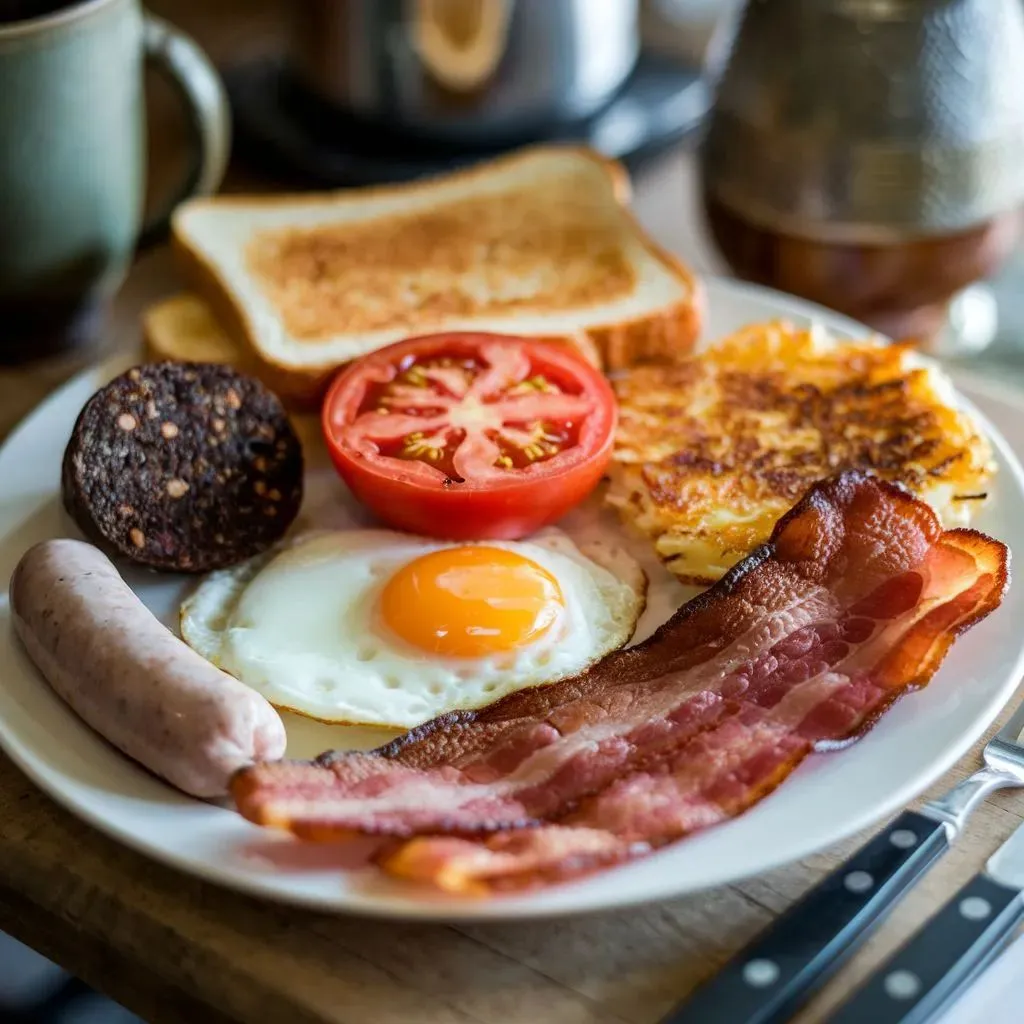
A Full English Breakfast is a hearty and traditional meal that typically includes a variety of ingredients such as sausages, bacon, eggs, baked beans, tomatoes, mushrooms, and toast. Here’s how to prepare this classic dish.
Ingredients
- Sausages: 4 pork sausages (British bangers preferred)
- Bacon: 4 slices of back bacon
- Eggs: 4 large eggs
- Baked Beans: 1 can (about 400g) of baked beans (Heinz is a popular choice)
- Tomatoes: 2 ripe tomatoes, halved
- Mushrooms: 200g (about 7 oz) of mushrooms, sliced
- Bread: 4 slices of bread (white or whole grain)
- Oil or Butter: For frying
- Salt and Pepper: To taste
Instructions
- Cook the Sausages and Bacon:
- In a large frying pan, heat a little oil or butter over medium heat.
- Add the sausages and cook for about 10–15 minutes, turning occasionally until browned and cooked through.
- Add the bacon to the same pan and cook until crispy, about 5–7 minutes. Remove both sausages and bacon from the pan and keep warm.
- Prepare the Baked Beans:
- In a small saucepan, heat the baked beans over low heat until warmed through.
- Cook the Tomatoes and Mushrooms:
- In the same frying pan, add a little more oil if needed.
- Sear the halved tomatoes cut side down for about 2–3 minutes until they are slightly caramelized.
- Add the sliced mushrooms and cook for another 5 minutes until they are soft and golden.
- Fry the Eggs:
- In a separate non-stick pan, fry the eggs to your liking (sunny-side up or over-easy). Season with salt and pepper.
- Toast the Bread:
- Toast the slices of bread in a toaster or a frying pan until golden brown.
- Assemble and Serve:
- On a large plate, arrange the sausages, bacon, fried eggs, baked beans, tomatoes, mushrooms, and toast.
- Serve hot with tea or coffee.
Tips for Success
- Quality Ingredients: Use high-quality sausages and bacon for the best flavor.
- Customization: Feel free to add black pudding or hash browns for an even heartier breakfast.
- Cooking Order: Cook items that take longer first (like sausages) to ensure everything is hot when served.
Cultural Significance of Full English Breakfast
The Full English Breakfast is not just a meal; it is an iconic representation of British culture and hospitality. Its origins can be traced back to the early 19th century when it was considered a farmer’s meal to fuel long days of work. Over time, it evolved into a staple breakfast option enjoyed by people from all walks of life. Typically served in homes and pubs across England, this breakfast is often associated with leisurely weekend mornings or special occasions. The dish embodies comfort food at its finest, providing warmth and satisfaction. In modern times, variations of the Full English Breakfast can be found worldwide, reflecting local tastes while maintaining its traditional roots. It remains a beloved choice for many who seek a hearty start to their day or a taste of British culinary heritage.
5. Yorkshire Pudding Recipe
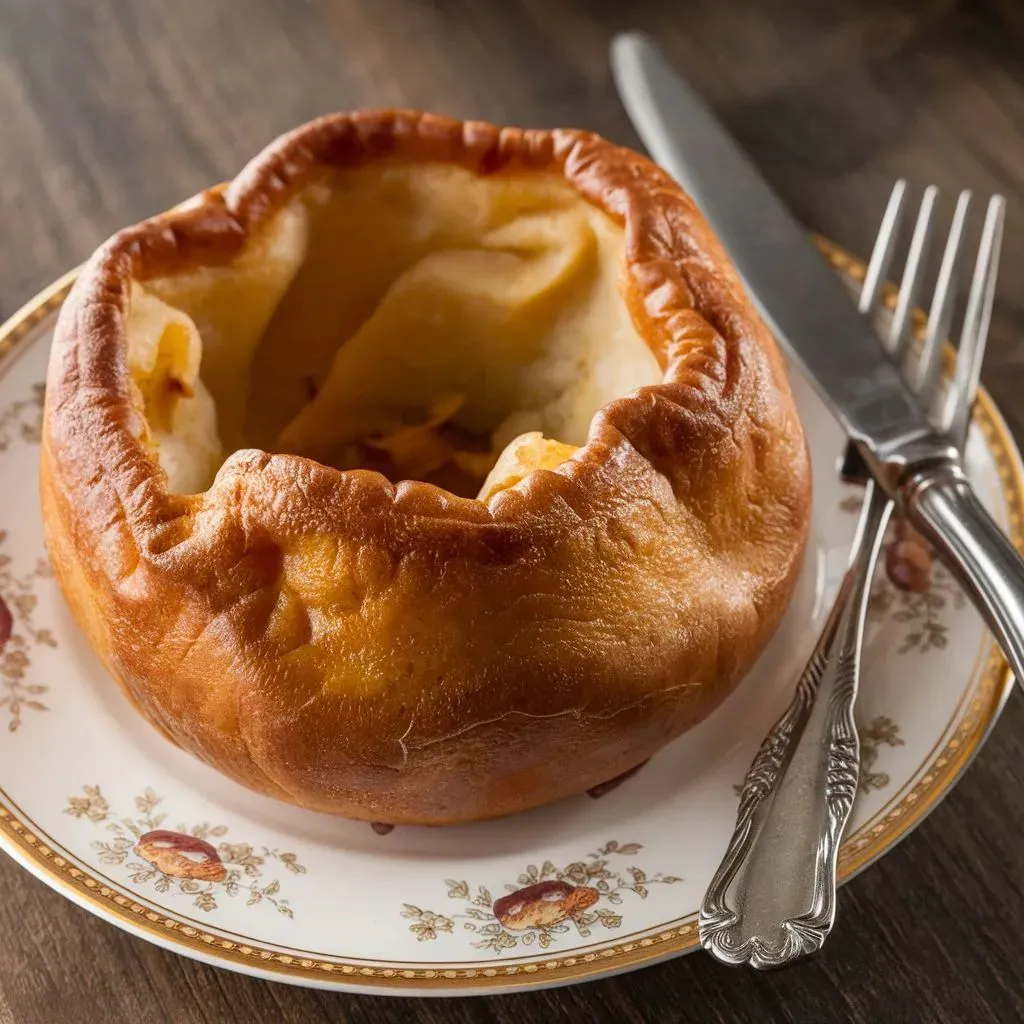
Yorkshire pudding is a classic British dish, traditionally served with roast beef and gravy. It is made from a simple batter of flour, eggs, and milk, which puffs up beautifully when baked. Here’s how to prepare Yorkshire pudding:
Ingredients
- 140g (1 cup + 2 tbsp) plain (all-purpose) flour
- 4 medium eggs
- 200ml (3/4 cup + 1 tbsp) milk (semi-skimmed preferred)
- 6 teaspoons beef dripping or lard (or vegetable oil for a vegetarian version)
- ¼ teaspoon salt
- ¼ teaspoon black pepper
Instructions
- Prepare the Batter:
- In a large jug or mixing bowl, add the plain flour and make a well in the center.
- Crack in the eggs and stir together with a whisk, gradually incorporating the flour.
- Slowly add the milk while continuing to whisk until you achieve a smooth batter. It’s okay if it’s slightly lumpy.
- Season with salt and pepper.
- Refrigerate the batter for at least 30 minutes (up to overnight) to allow the flour to swell.
- Preheat the Oven:
- Preheat your oven to 220°C (425°F).
- Place a teaspoon of beef dripping or lard into each hole of a 12-hole Yorkshire pudding tin or muffin tray.
- Heat the Tin:
- Place the tin in the oven for about 10 minutes until the fat is smoking hot.
- Bake the Puddings:
- Carefully remove the hot tin from the oven. Quickly pour the chilled batter into each hole, filling them about halfway.
- Return the tin to the oven immediately and bake for 15–20 minutes until the puddings are puffed and golden brown.
- Serve:
- Serve immediately alongside roast beef and gravy or as part of a traditional Sunday dinner.
Tips for Success
- Ensure your oil or fat is very hot before adding the batter; this is crucial for achieving a good rise.
- Do not open the oven door during baking, as this can cause the puddings to deflate.
- For larger Yorkshire puddings, use a deeper tin and adjust the cooking time accordingly (about 25–30 minutes).
Cultural Significance of Yorkshire Pudding
Yorkshire pudding is deeply rooted in British culinary tradition, particularly associated with Sunday roasts and festive occasions. Its origins date back to the 18th century when it was served as a first course to fill diners before the main meal, making it an economical option. The dish has become an iconic symbol of British cuisine, often enjoyed with roast beef and gravy. It reflects traditional cooking methods and regional ingredients, showcasing simplicity at its finest. Today, Yorkshire pudding is celebrated not only for its delicious taste but also as a staple of British culture, often featured in pubs and homes across the UK. Whether enjoyed as part of a hearty meal or on its own with gravy, Yorkshire pudding remains a beloved dish that evokes warmth and nostalgia for many.
6. Sunday Roast Recipe
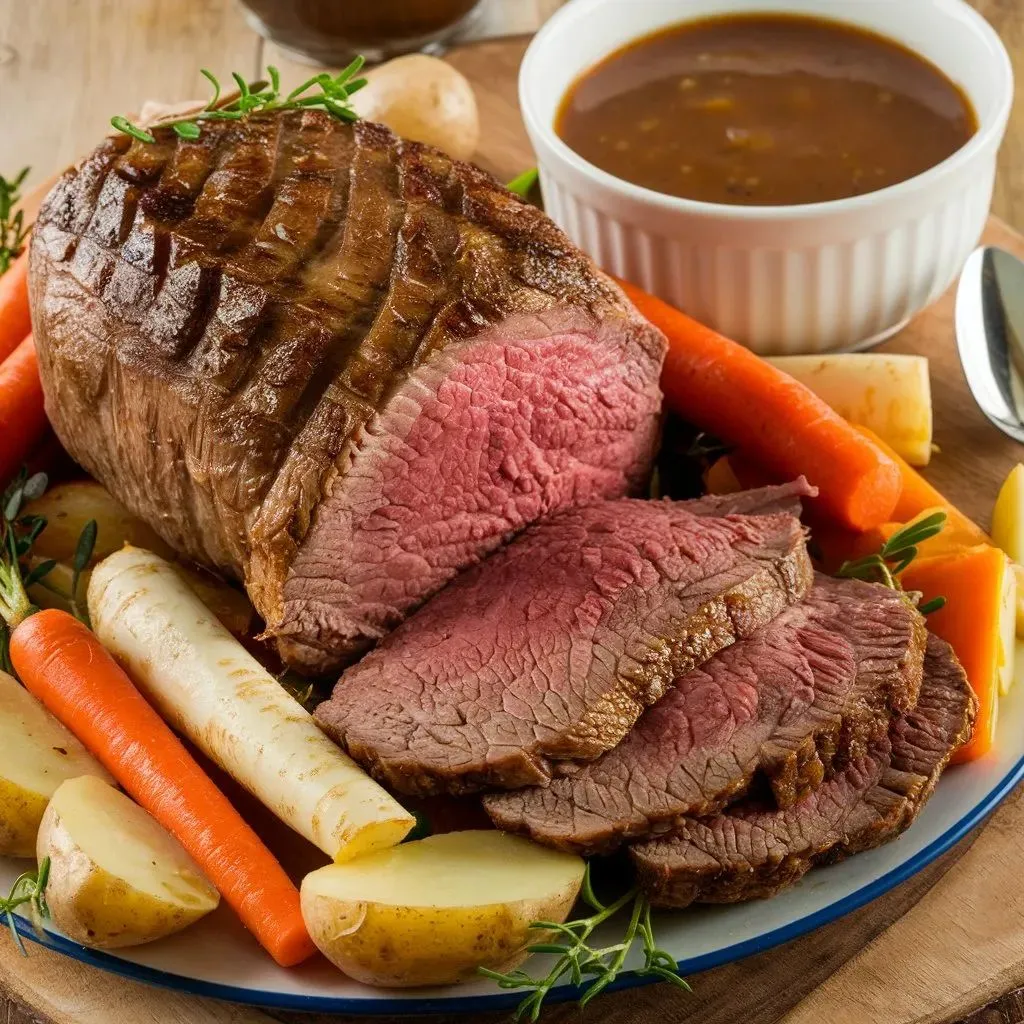
A traditional Sunday roast is a hearty meal typically featuring roasted meat, potatoes, and various sides. Below is a comprehensive recipe for a classic beef roast with accompanying sides.
Ingredients
For the Roast Beef:
- 3-4 lb beef roast (top round or rib roast)
- 1 heaping teaspoon sea salt
- 1 heaping teaspoon black pepper
- Olive oil for searing
For the Vegetables:
- 2.5 lbs russet potatoes, peeled and cut into chunks
- 1 lb turnips, peeled and cut into chunks (or substitute with more potatoes)
- 1 whole head of garlic, separated into cloves but not peeled
- 20 bay leaves (optional)
For the Gravy:
- 2 tablespoons unsalted butter or pan drippings
- 2 tablespoons all-purpose flour
- 1 cup beef broth
- Salt and pepper to taste
- Worcestershire sauce (optional)
For Yorkshire Pudding (optional):
- 105 g (1 cup minus 1 tbsp) all-purpose flour
- 3 medium eggs
- 150 ml (1/2 cup + 2 tbsp) milk
- Beef dripping or lard for cooking
Instructions
- Prepare the Beef:
- Take the beef out of the refrigerator about 30 minutes before cooking to bring it to room temperature.
- Preheat your oven to 475°F (246°C) and place a sturdy roasting pan inside to heat.
- Season the Meat:
- In a small bowl, mix salt, pepper, and a drizzle of olive oil. Rub this mixture all over the beef.
- Place the beef in the hot roasting pan, fat side up, and roast uncovered for about 50 minutes for medium rare. Adjust time for desired doneness.
- Prepare the Vegetables:
- While the beef roasts, prepare the vegetables. Bash the unpeeled garlic cloves and add them to the roasting pan along with butter and bay leaves.
- After removing the beef, toss the potatoes and turnips in the pan with the garlic and any remaining juices. Season well with salt and pepper.
- Roast Vegetables:
- Return the pan with vegetables to the oven and roast for an additional 30 minutes until crispy and golden.
- Make Gravy:
- After removing the beef from the oven, let it rest for at least 30 minutes before carving.
- To make gravy, use drippings from the roasting pan. In a saucepan, melt butter over medium heat, whisk in flour to create a roux, then slowly add beef broth while stirring until thickened. Season with salt, pepper, and Worcestershire sauce if desired.
- Prepare Yorkshire Pudding (if desired):
- For Yorkshire pudding, mix flour and eggs in a jug, gradually adding milk until combined. Chill in the fridge for at least 30 minutes.
- Preheat a muffin tin with beef dripping at 425°F (220°C). Pour batter into hot tins and bake until puffed and golden.
- Serve:
- Carve the rested beef into slices and serve alongside roasted vegetables and gravy. Yorkshire pudding can be served on the side as well.
This recipe creates a delicious Sunday roast that is perfect for family gatherings or special occasions. Enjoy your meal!
Cultural Significance
- Symbol of Prosperity: Historically, a lavish Sunday roast indicated wealth and hospitality. Not everyone could afford a large cut of meat or the means to cook it, so enjoying such a meal was a marker of affluence.
- Religious Roots: The tradition is closely linked to Christian practices. Sundays were designated as days of rest and worship, allowing families to attend church before enjoying a hearty meal together. This practice is reflected in the custom of cooking meat on Sundays, as it was often forbidden on other days like Fridays.
- Community and Family Bonding: The Sunday roast has evolved into a weekly ritual for many families, providing an opportunity to gather and share a meal. It fosters a sense of togetherness and continuity in British culture, with many people continuing this tradition regardless of their current religious beliefs.
Modern Adaptations
Today, the Sunday roast is not only served at home but also in pubs and restaurants across the UK. It has become a staple meal that can be enjoyed any day of the week, although many still reserve it for Sundays as a way to celebrate family and heritage
The meal typically includes roasted meat (often beef), potatoes, vegetables, and gravy, with Yorkshire pudding frequently accompanying it. In summary, the Sunday roast is more than just a meal; it embodies historical traditions, social values, and communal experiences that continue to resonate within British culture today.
7. Steak and Kidney Pie Recipe
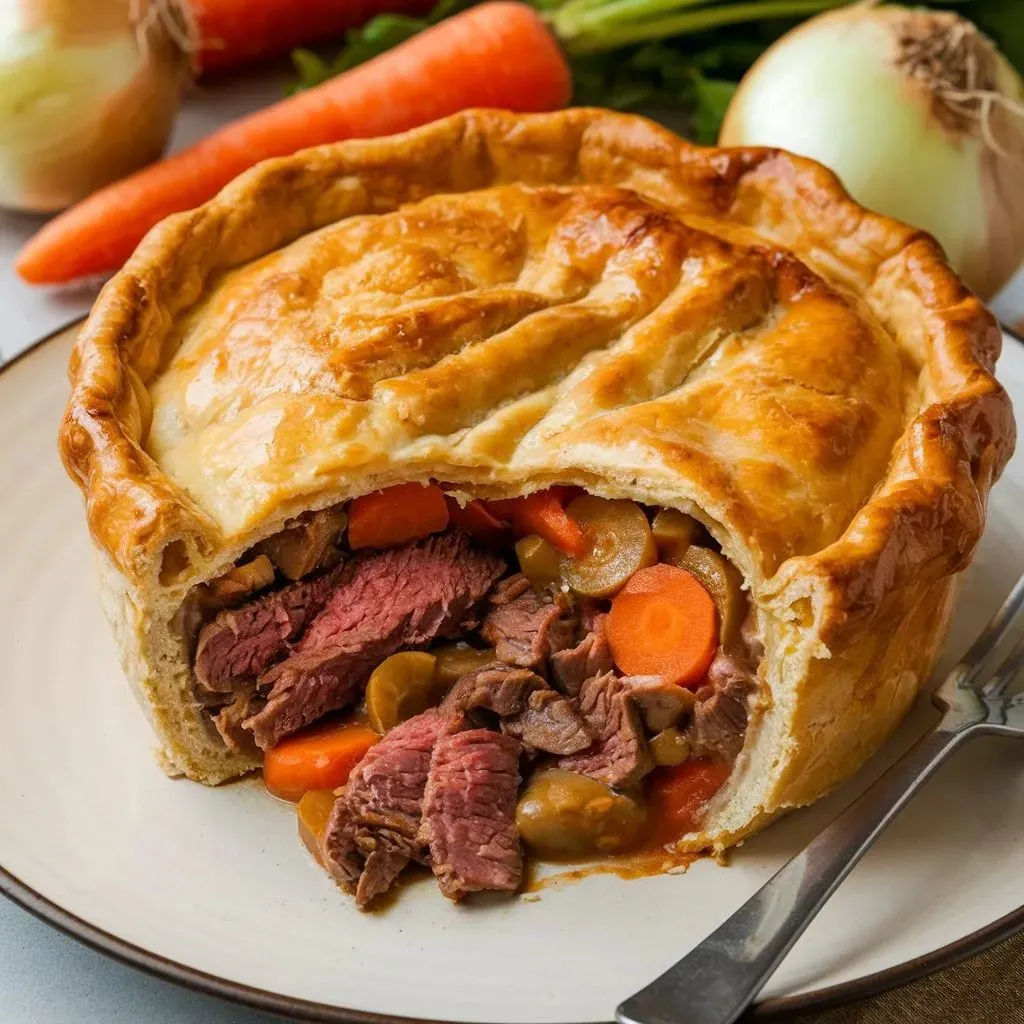
Steak and kidney pie is a classic British dish known for its rich flavors and comforting qualities. Here’s a detailed recipe to help you create this traditional meal.
Ingredients
For the Filling:
- 1 lb (450g) beef (such as chuck or top rump), cut into bite-sized cubes
- 1 lb (450g) beef kidneys, cleaned and cut into pieces
- 2 large onions, chopped
- 2 tablespoons vegetable oil
- 3 tablespoons all-purpose flour
- 2 cups beef stock
- 1 tablespoon Worcestershire sauce
- Salt and pepper to taste
For the Pastry:
- 2 cups all-purpose flour
- 1/2 cup (115g) unsalted butter, chilled and cubed
- 1/4 teaspoon salt
- Cold water (about 4-5 tablespoons)
- 1 egg, beaten (for egg wash)
Instructions
- Prepare the Filling:
- Heat the vegetable oil in a large frying pan over medium-high heat. Brown the beef cubes in batches, ensuring they are seared on all sides. Remove from the pan and set aside.
- In the same pan, add the kidneys and cook until browned. Remove and set aside with the beef.
- Add the chopped onions to the pan and sauté for about 3-4 minutes until softened.
- Return the browned beef and kidneys to the pan. Sprinkle with flour, stirring to coat the meat and onions evenly.
- Gradually add the beef stock while stirring to avoid lumps. Bring to a boil, then reduce heat and simmer for about 1.5 hours until the meat is tender. Stir in Worcestershire sauce, salt, and pepper. Allow to cool completely.
- Make the Pastry:
- In a mixing bowl, combine flour and salt. Add chilled butter and rub it into the flour until it resembles coarse breadcrumbs.
- Gradually add cold water, mixing until a dough forms. Wrap in cling film and refrigerate for at least 30 minutes.
- Assemble the Pie:
- Preheat your oven to 425°F (220°C).
- Roll out two-thirds of the pastry on a floured surface to fit your pie dish. Line the dish with this pastry.
- Fill with the cooled meat mixture, ensuring not to overfill.
- Roll out the remaining pastry for the lid. Place it over the filling, sealing the edges by crimping them together. Cut slits in the top for steam to escape.
- Brush with beaten egg for a golden finish.
- Bake:
- Bake in the preheated oven for about 30-40 minutes or until golden brown.
- Let it cool slightly before serving.
Cooking Tips
Make Ahead: Preparing the filling a day in advance allows flavors to meld and makes it easier to skim off excess fat before assembling the pie.
Kidney Soaking: Some recipes recommend soaking kidneys in milk or water to reduce their strong flavor before cooking.
Cultural Significance
- Historical Roots: The origins of steak and kidney pie can be traced back to the 19th century, with its popularity rising during the Industrial Revolution when hearty meals were essential for laborers. The dish became a staple in British households, often associated with Sunday dinners or special occasions.
- Comfort Food: It is considered quintessential comfort food in Britain, often evoking nostalgia and warmth. The combination of tender meat and rich gravy encased in pastry makes it a beloved dish that many associate with home cooking.
- Regional Variations: While steak and kidney pie are widely recognized throughout the UK, regional variations exist. Some areas may include different types of meat or additional ingredients, reflecting local tastes and traditions.
Conclusion
Steak and kidney pie remains a beloved dish in British cuisine, representing not only culinary tradition but also the social fabric of family gatherings and communal meals. Its rich flavors and comforting nature ensure its place as a staple in homes across the UK. Whether enjoyed at home or in a pub, it continues to be a symbol of hearty British fare.
8. Crumpet Recipe

Crumpets are a delightful British treat known for their spongy texture and characteristic holes. They are perfect for toasting and enjoying with butter or various toppings. Here’s a straightforward recipe to make your crumpets at home.
Ingredients
- For the Crumpet Batter:
- 2 cups (250g) all-purpose flour
- 1 teaspoon instant yeast (or active dry yeast)
- 1 teaspoon granulated sugar
- 1 teaspoon salt
- 1 teaspoon baking powder
- 1.5 cups (360ml) warm water (about 110°F or 43°C)
Instructions
- Prepare the Yeast Mixture:
- In a small bowl, dissolve the yeast and sugar in about 2 tablespoons of warm water. Let it sit for about 5-10 minutes until frothy.
- Make the Batter:
- In a large mixing bowl, combine the flour and salt. Gradually add the warm water, mixing until you have a smooth batter.
- Add the yeast mixture and baking powder to the flour mixture. Whisk until fully combined and smooth.
- Let It Rise:
- Cover the bowl with a clean cloth or plastic wrap and place it in a warm area. Let it rise for about 20-30 minutes until the surface is foamy.
- Cook the Crumpets:
- Preheat a non-stick skillet or griddle over medium heat. Lightly grease crumpet rings (or egg rings) with oil.
- Pour about 1/4 cup of batter into each ring, filling them halfway.
- Cook for about 5-7 minutes until bubbles form on the surface and the edges look set. The tops should be dry but not browned.
- Carefully remove the rings and flip the crumpets to cook for another minute on the other side until lightly golden.
- Serve:
- Allow the crumpets to cool slightly before toasting them again if desired. Serve warm with butter, jam, or your favorite toppings.
Tips
- For best results, ensure that your cooking surface is not too hot; otherwise, the crumpets may brown before they fully cook through.
- Store any leftover crumpets in an airtight container; they can be toasted again when ready to eat.
Enjoy your homemade crumpets as a delightful breakfast or tea-time snack!
Overview of Crumpets
- Origin: Crumpets date back to the 17th century, evolving from thin pancakes made with flour, milk, and eggs. The modern version likely developed during the Victorian era when bakers began using yeast and baking powder to create a lighter texture.
- Texture and Cooking Method: Crumpets are unique due to their cooking method. The batter is poured onto a hot griddle or baking sheet within shallow rings, allowing them to cook on one side only. This results in a moist top filled with small holes, perfect for holding butter or other toppings.
- Serving Suggestions: Traditionally, crumpets are toasted until golden brown and then generously buttered. They can also be topped with a variety of spreads such as honey, jam, or even savory options like poached eggs or bacon.
Conclusion
Crumpets are not only delicious but also steeped in British tradition. Their unique texture and versatility make them a delightful addition to any meal or snack time, embodying comfort and nostalgia in every bite.
9. Lancashire Hotpot Recipe
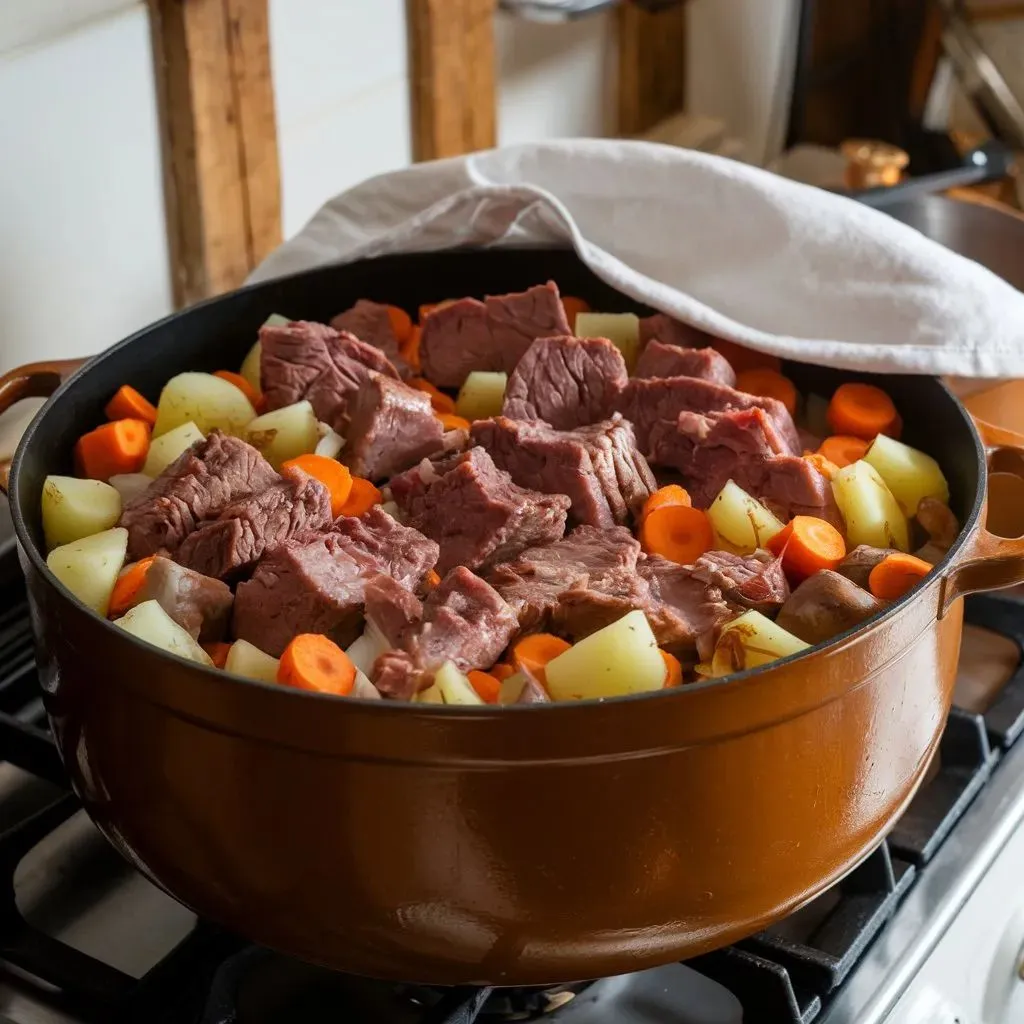
Lancashire hotpot is a traditional British dish, particularly associated with the Lancashire region. It is a hearty and comforting casserole made with lamb, and vegetables, and topped with sliced potatoes. Here’s a detailed recipe to prepare this classic dish.
Ingredients
- For the Filling:
- 500g (1.1 lbs) lamb (shoulder or neck), cut into bite-sized chunks
- 2 brown onions, peeled and sliced
- 2 medium carrots, peeled and cut into chunks
- 1 tablespoon butter
- 1 tablespoon vegetable oil
- 1 heaped tablespoon plain (all-purpose) flour
- 480ml (2 cups) hot chicken or vegetable stock
- 1 tablespoon Worcestershire sauce
- 2 bay leaves
- Salt and pepper to taste
- For the Potato Topping:
- 680g (1.5 lbs) floury potatoes (such as Maris Piper), peeled and sliced thinly (about 2-3mm thick)
- 1 tablespoon melted butter for brushing
- Optional: Fresh thyme for seasoning
Instructions
- Preheat the Oven:
- Preheat your oven to 160°C (325°F).
- Brown the Meat:
- In a large pot, heat the butter and vegetable oil over medium-high heat. Add the lamb chunks in batches, browning them on all sides. Remove the browned meat and set aside.
- Sauté the Vegetables:
- In the same pot, add the sliced onions and carrots. Cook for about 5 minutes until softened.
- Make the Gravy:
- Sprinkle the flour over the vegetables and stir for about a minute to cook off the raw flour taste.
- Gradually pour in the hot stock while stirring continuously to avoid lumps. Add Worcestershire sauce, bay leaves, salt, and pepper. Return the browned lamb to the pot and bring to a gentle simmer.
- Assemble the Hotpot:
- Transfer the meat and vegetable mixture into a large lidded casserole dish.
- Layer the sliced potatoes on top of the filling, overlapping them slightly. Brush the potatoes with melted butter and season with salt and pepper.
- Bake:
- Cover the casserole dish with a lid or foil and place it in the preheated oven. Bake for about 1.5 hours.
- After this time, remove the lid or foil and bake for an additional 30 minutes until the potatoes are golden brown and crispy on top.
- Serve:
- Once cooked, let it sit for a few minutes before serving. Enjoy your Lancashire hotpot with crusty bread or pickled vegetables on the side.
Tips
- For added flavor, consider including lamb kidneys or black pudding in your filling.
- Ensure that you use floury potatoes for a better texture that crisps up nicely on top.
This recipe captures the essence of Lancashire hotpot—a warm, filling dish perfect for family gatherings or cozy dinners!
Historical Context
- Working-Class Staple: The hotpot emerged as a practical meal for the working class during the 19th century, specifically tailored for cotton mill laborers. These workers often faced long hours and needed a filling, economical dish that could be prepared in advance and left to cook slowly while they toiled. The hotpot’s ingredients—mutton, root vegetables, and potatoes—were affordable and readily available, making it an ideal choice for families with limited resources.
- Hearty and Nourishing: The dish is characterized by its hearty nature, combining mutton (or lamb) with root vegetables like carrots and onions, all topped with thinly sliced potatoes that create a crispy layer when baked. This combination not only provided sustenance but also comfort during harsh working conditions. The aged mutton used in traditional recipes offers a richer flavor compared to lamb, adding to the dish’s depth.
Cultural Significance
- Symbol of Community and Resilience: The Lancashire hotpot represents more than just a meal; it symbolizes community resilience during challenging times. It was a dish that brought families together, often served at communal gatherings or family dinners. Its preparation allowed for the sharing of resources among neighbors, reinforcing social bonds within working-class communities.
- Evolution of Ingredients: Over time, as cooking methods evolved and access to various ingredients increased, the hotpot adapted. While it originally featured mutton as the primary meat, variations have emerged that include lamb or even oysters in some historical recipes, reflecting changes in availability and taste preferences over generations.
Modern Relevance
Today, Lancashire hotpot continues to be celebrated as a classic British comfort food. It is commonly found in pubs and homes across the UK, often enjoyed during colder months as a warming dish. The recipe has remained relatively unchanged, preserving its traditional roots while also allowing for personal adaptations by home cooks. In summary, Lancashire hotpot is not just a dish but a representation of historical working-class life in England. Its humble beginnings reflect the resourcefulness of families during the Industrial Revolution and continue to resonate with contemporary notions of comfort food and community bonding.
10. Sticky Toffee Pudding Recipe
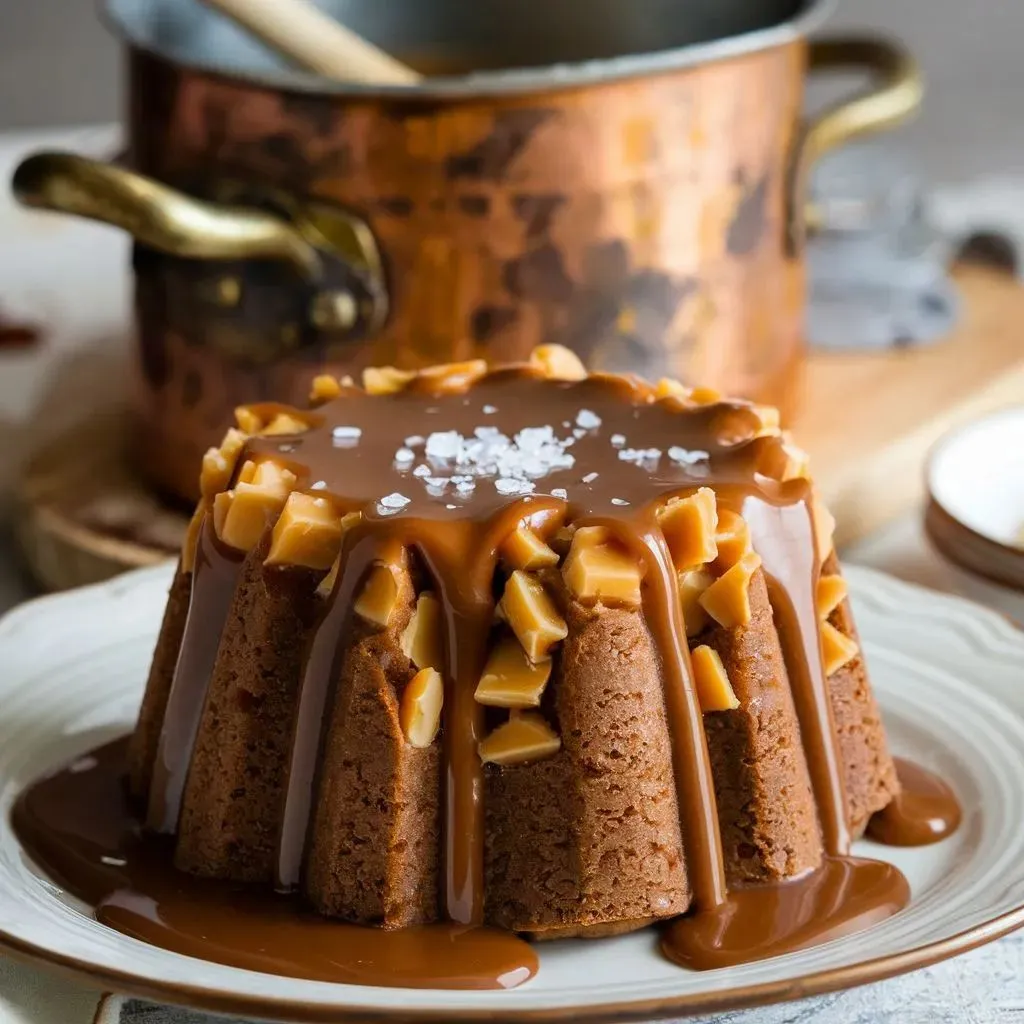
Sticky toffee pudding is a beloved British dessert known for its rich, moist sponge cake made with dates and drenched in a luscious toffee sauce. Here’s a detailed recipe to help you create this indulgent treat at home.
Ingredients
For the Pudding:
- 175 g (6 oz) pitted dates, chopped
- 175 ml (3/4 cup) boiling water
- 75 g (1/3 cup) unsalted butter, softened
- 175 g (3/4 cup) light or dark brown sugar
- 250 g (2 cups) self-raising flour
- 1 tsp baking powder
- 1 tsp bicarbonate of soda
- 75 g (1/4 cup) black treacle (or golden syrup)
- 3 medium eggs
- 125 ml (1/2 cup) whole milk
For the Toffee Sauce:
- 75 g (1/3 cup) unsalted butter
- 75 g (1/3 cup) light or dark brown sugar
- 2 tbsp black treacle (or golden syrup)
- 1 tsp vanilla extract
- 150 ml (2/3 cup) double cream
Instructions
- Prepare the Dates:
- In a bowl, combine the chopped dates and boiling water. Let them soak for about 15 minutes until softened.
- Make the Pudding Batter:
- Preheat your oven to 180°C (350°F). Grease a baking dish or individual ramekins.
- In a mixing bowl, cream together the softened butter and brown sugar until light and fluffy.
- Beat in the eggs one at a time, mixing well after each addition. Add the black treacle and mix until combined.
- In another bowl, whisk together the flour, baking powder, and bicarbonate of soda.
- Gradually add the dry ingredients to the wet mixture, alternating with the milk. Mix until just combined.
- Fold in the soaked dates along with their soaking liquid.
- Bake the Pudding:
- Pour the batter into the prepared baking dish or ramekins. Bake for about 30-35 minutes for a large dish 20 minutes for individual portions, or until a toothpick inserted into the center comes out clean.
- Prepare the Toffee Sauce:
- While the pudding is baking, make the toffee sauce. In a saucepan over medium heat, melt the butter and brown sugar together. Stir until dissolved.
- Add the black treacle and vanilla extract, then pour in the double cream. Bring to a gentle simmer and cook for about 5 minutes until slightly thickened.
- Serve:
- Once baked, let the pudding cool slightly before serving. Drizzle warm toffee sauce over each portion and serve with whipped cream or vanilla ice cream if desired.
Tips
- For an extra indulgent touch, you can pour some of the toffee sauce over the pudding before it cools completely to allow it to soak in.
- Sticky toffee pudding is best served warm but can be reheated gently in the microwave or oven.
Enjoy this classic dessert that’s perfect for any occasion!
Historical Context
- Post-War Comfort Food: Sticky toffee pudding emerged in the post-World War II era, a time when food was still rationed and luxuries were scarce. The desire for indulgent, comforting desserts grew as people sought warmth and normalcy in their diets. This pudding, with its rich flavors and sweet toffee sauce, became a symbol of comfort during challenging times.
- Contested Origins: The exact origins of sticky toffee pudding are debated, with claims linking it to various locations in the UK and even Canada. While many associate it with the Sharrow Bay Hotel in Cumbria, where it was popularized by chef Francis Coulson in the 1970s, others suggest that Canadian Royal Air Force pilots may have inspired its creation during World War II. These connections highlight the cross-cultural influences that shape culinary traditions.
Cultural Significance
- Symbol of Indulgence: Sticky toffee pudding represents indulgence and celebration in British culture. It is often featured on menus at restaurants and pubs across the UK, especially during festive occasions and family gatherings. Its rich taste and texture evoke feelings of nostalgia and comfort, making it a favorite among many.
- Literary and Popular Culture: The dessert has found its way into literature and popular culture as a symbol of warmth and indulgence. References in books and media reinforce its status as an iconic British dessert that brings people together.
Modern Relevance
Today, sticky toffee pudding is celebrated not only in the UK but also internationally. It has become a staple in British cuisine, often served with custard or ice cream, further enhancing its appeal. The dessert’s popularity has led to dedicated events such as International Sticky Toffee Pudding Day, which honors this classic treat and its place in culinary heritage. In summary, sticky toffee pudding is a dish that embodies comfort, indulgence, and a sense of community. Its contested origins add depth to its story, reflecting the interconnectedness of culinary traditions across cultures. Whether enjoyed at home or in restaurants, sticky toffee pudding remains a cherished symbol of British culinary identity.
